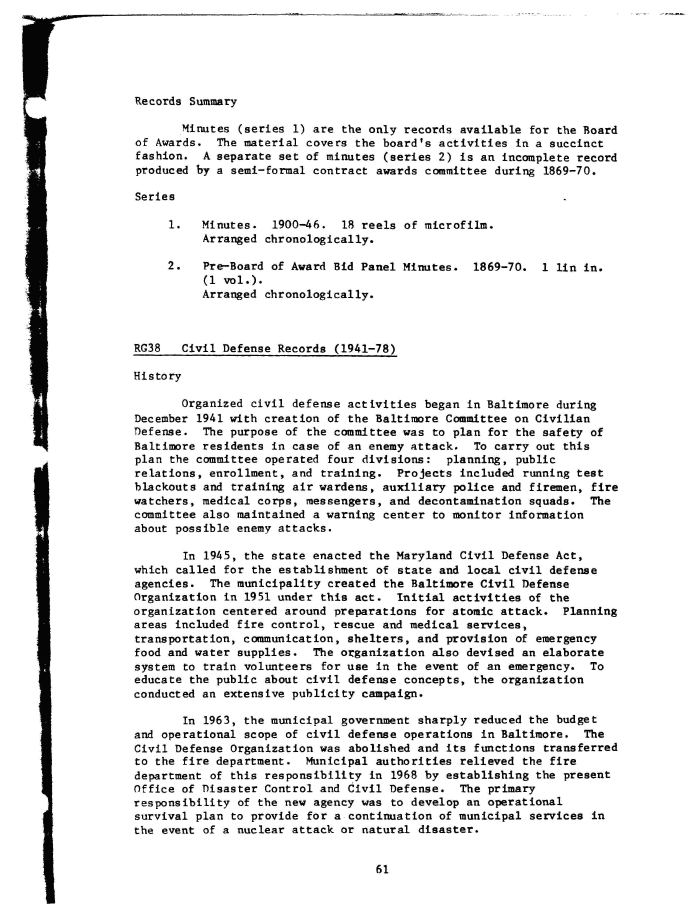|
Records Summary
Minutes (series 1) are the only records available for the Board
of Awards. The material covers the board's activities in a succinct
fashion. A separate set of minutes (series 2) is an incomplete record
produced by a semi-formal contract awards committee during 1869-70.
Series
1.
2.
Minutes. 1900-46. 18 reels of microfilm.
Arranged chronologically.
Pre-Board of Award Bid Panel Minutes.
(1 vol.).
Arranged chronologically.
1869-70. 1 lin in.
RG38 Civil Defense Records (1941-78)
History
Organized civil defense activities began in Baltimore during
December 1941 with creation of the Baltimore Committee on Civilian
Defense. The purpose of the committee was to plan for the safety of
Baltimore residents in case of an enemy attack. To carry out this
plan the committee operated four divisions: planning, public
relations, enrollment, and training. Projects included running test
blackouts and training air wardens, auxiliary police and firemen, fire
watchers, medical corps, messengers, and decontamination squads. The
committee also maintained a warning center to monitor information
about possible enemy attacks.
In 1945, the state enacted the Maryland Civil Defense Act,
which called for the establishment of state and local civil defense
agencies. The municipality created the Baltimore Civil Defense
Organization in 1951 under this act. Initial activities of the
organization centered around preparations for atomic attack. Planning
areas included fire control, rescue and medical services,
transportation, communication, shelters, and provision of emergency
food and water supplies. The organization also devised an elaborate
system to train volunteers for use in the event of an emergency. To
educate the public about civil defense concepts, the organization
conducted an extensive publicity campaign.
In 1963, the municipal government sharply reduced the budget
and operational scope of civil defense operations in Baltimore. The
Civil Defense Organization was abolished and its functions transferred
to the fire department. Municipal authorities relieved the fire
department of this responsibility in 1968 by establishing the present
Office of Disaster Control and Civil Defense. The primary
responsibility of the new agency was to develop an operational
survival plan to provide for a continuation of municipal services in
the event of a nuclear attack or natural disaster.
61
|

